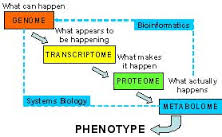The overarching aims of the DIRECT consortium are to discover potential biomarkers that will help identify patients whose disease is likely to progress more rapidly or patients who have a different response to diabetes treatments. We thereby hope to develop a ‘personalised’ or stratified medicines approach to treatment of ‘type 2 diabetes’ (T2D) using either existing or novel therapies.
Type 2 diabetes is a highly variable condition largely because when hyperglycaemia (a high blood sugar level) is discovered it is a diagnosis made after exclusion of other known causes.
Thus there is a need to:
- identify biomarkers that can stratify populations by risk of progression and thereby enable targeted intervention
- identify biomarkers that can be used to assess change in underlying beta-cell function and/or mass in response to a treatment intervention
- develop new mechanistic hypotheses for disease progression or response to treatment intervention leading to new therapies or to a better use of existing therapies
- define groups of type 2 diabetes patients who do not respond or are intolerant to a treatment
The identification and validation of important biomarkers for glycaemic deterioration and treatment response could potentially be used to predict and monitor the effect of therapeutic interventions in subtypes of diabetes with different pathophysiology.





